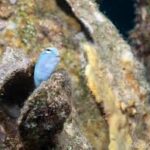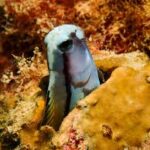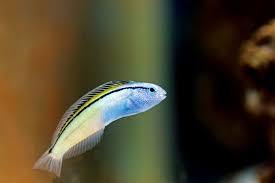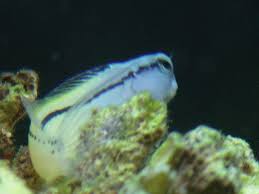
Rosa cymosa, commonly known as the Seven Sisters rose, is a species of flowering plant that interacts with various forms of wildlife, including rodent species. These interactions can have significant ecological implications, shaping plant distribution, seed dispersal, and ecosystem dynamics. In this article, we will explore the relationship between Rosa cymosa and rodent species, encompassing their foraging behavior, seed predation, and mutualistic interactions in natural ecosystems.
#### Introduction to Rosa cymosa
**Botanical Profile**
Rosa cymosa is a deciduous shrub belonging to the Rosaceae family, native to East Asia, particularly China and Japan. Characterized by its clusters of pink or white flowers and red rosehips, Rosa cymosa thrives in diverse habitats, including forests, woodlands, and scrublands. Beyond its ornamental value, Rosa cymosa plays a vital role in ecosystem functioning and supports a wide range of wildlife species.
**Seed Production and Dispersal**
Rosa cymosa produces fleshy rosehips, which contain seeds enclosed in nutritious pulp. These seeds are dispersed through various mechanisms, including animal ingestion and seed caching. Rodents, in particular, play a crucial role in seed dispersal by consuming rosehips and dispersing seeds through their feces or caching behavior, thereby contributing to plant regeneration and genetic diversity.
#### Foraging Behavior of Rodent Species
**Seed Consumption**
Rodents are opportunistic feeders and readily consume the seeds and fruits of Rosa cymosa as part of their diet. Species such as mice, voles, and squirrels are known to forage on rosehips, exploiting their nutritional resources during the fruiting season. The consumption of rosehips by rodents contributes to seed dispersal and may influence the spatial distribution of Rosa cymosa populations in natural habitats.
**Selective Foraging**
Rodents exhibit selective foraging behavior, preferring certain parts of Rosa cymosa plants or specific stages of fruit ripeness. For example, rodents may target ripe rosehips with higher sugar content, maximizing their energy intake during periods of food scarcity. This selective foraging behavior can influence seed predation rates and the success of Rosa cymosa reproduction in different ecological contexts.
#### Seed Predation Dynamics
**Impact on Seed Survival**
While rodents play a vital role in seed dispersal, they also pose a threat to seed survival through predation. Rodents may consume a significant proportion of Rosa cymosa seeds, either directly from ripe rosehips or from cached seeds. Seed predation rates vary depending on factors such as rodent density, habitat structure, and interspecific competition, affecting seedling recruitment and plant population dynamics.
**Spatial Seed Distribution**
The foraging behavior of rodents influences the spatial distribution of Rosa cymosa seeds within ecosystems. Rodents disperse seeds through scatter-hoarding behavior, burying them in underground caches or stashing them in crevices for later consumption. This seed caching behavior can lead to spatially heterogeneous seed distributions, with implications for seedling establishment, plant competition, and community dynamics.
#### Mutualistic Interactions
**Seed Caching Mutualism**
The interaction between Rosa cymosa and rodent species represents a mutualistic relationship characterized by seed dispersal and caching behavior. Rodents benefit from consuming nutritious rosehips, while Rosa cymosa benefits from the dispersal of its seeds to new locations for germination and establishment. This mutualistic interaction promotes the survival and reproductive success of both plant and animal species in natural ecosystems.
**Co-evolutionary Dynamics**
The co-evolutionary dynamics between Rosa cymosa and rodent species have shaped their mutualistic interactions over evolutionary time scales. Traits such as fruit morphology, seed size, and chemical composition have evolved in response to selective pressures exerted by rodent foraging behavior, optimizing seed dispersal efficiency and enhancing plant fitness.
#### Conclusion
The interaction between Rosa cymosa and rodent species exemplifies the intricate ecological relationships that shape natural ecosystems. Rodents play a dual role as seed dispersers and seed predators, influencing the spatial distribution, population dynamics, and reproductive success of Rosa cymosa plants. Understanding these ecological interactions is essential for conserving biodiversity, maintaining ecosystem resilience, and promoting sustainable management practices in natural habitats. In the next section, we will explore specific conservation strategies and management approaches aimed at preserving the mutualistic relationship between Rosa cymosa and rodent species.
### Exploring the Interaction of Rosa cymosa with Rodent Species (Part 2)
In the previous section, we discussed the intricate relationship between Rosa cymosa and rodent species, focusing on their foraging behavior, seed predation dynamics, and mutualistic interactions. Now, let’s delve deeper into the ecological significance of this interaction, including its implications for plant population dynamics, ecosystem functioning, and conservation efforts.
#### Plant Population Dynamics
**Seed Dispersal**
Rodents play a critical role in seed dispersal by consuming rosehips and dispersing seeds to new locations through scatter-hoarding behavior. This process enhances seedling recruitment, genetic diversity, and population connectivity within Rosa cymosa populations. By dispersing seeds over large spatial scales, rodents contribute to the resilience and persistence of Rosa cymosa populations in dynamic and heterogeneous environments.
**Seed Predation**
While seed dispersal by rodents facilitates plant regeneration, seed predation can have negative effects on seed survival and plant recruitment. High levels of seed predation may reduce seedling establishment rates and limit the expansion of Rosa cymosa populations, particularly in habitats with high rodent densities or limited seed availability. Understanding the balance between seed dispersal and predation is crucial for predicting plant population dynamics and ecosystem resilience.
#### Ecosystem Functioning
**Nutrient Cycling**
The interaction between Rosa cymosa and rodent species influences nutrient cycling processes within ecosystems. Rodents contribute to seed dispersal and seed burial, facilitating the incorporation of organic matter and nutrients into the soil. Decomposition of rodent feces and cached seeds enriches soil fertility and enhances nutrient availability for plant growth, thereby influencing ecosystem productivity and biodiversity.
**Plant-Animal Interactions**
Rosa cymosa provides valuable resources for rodent species, including food, shelter, and nesting sites. Rodents, in turn, contribute to plant pollination, seed dispersal, and nutrient cycling processes, creating reciprocal interactions that shape ecosystem dynamics. These plant-animal interactions promote species diversity, community stability, and ecosystem resilience, highlighting the interconnectedness of organisms within natural habitats.
#### Conservation Implications
**Habitat Management**
Conserving habitat diversity and structural complexity is essential for supporting mutualistic interactions between Rosa cymosa and rodent species. Maintaining diverse vegetation communities, including shrublands, woodlands, and forest edges, provides habitat heterogeneity and resources for rodent populations. Implementing habitat management practices such as controlled burns, invasive species control, and restoration activities can enhance habitat quality and promote species diversity in natural ecosystems.
**Invasive Species Control**
Invasive species pose a significant threat to native plant-animal interactions, disrupting mutualistic relationships and altering ecosystem dynamics. Controlling invasive species that compete with Rosa cymosa for resources or negatively impact rodent populations is essential for preserving their mutualistic interactions. Targeted eradication efforts, habitat restoration projects, and public education initiatives can help mitigate the spread of invasive species and protect native biodiversity.
#### Research and Monitoring
**Long-Term Studies**
Long-term monitoring and research studies are essential for understanding the dynamics of Rosa cymosa-rodent interactions and their implications for ecosystem functioning. Monitoring changes in plant population dynamics, rodent abundance, and habitat conditions over time can provide insights into the resilience of mutualistic relationships and inform conservation strategies.
**Ecological Modeling**
Ecological modeling techniques can help predict the effects of environmental changes, such as habitat loss, climate change, and invasive species encroachment, on Rosa cymosa-rodent interactions. By integrating field data, experimental results, and ecological models, researchers can assess the vulnerability of mutualistic relationships to anthropogenic disturbances and develop adaptive management strategies for conserving biodiversity.
#### Conclusion
The interaction between Rosa cymosa and rodent species exemplifies the complex web of ecological relationships that underpin ecosystem functioning and biodiversity conservation. By understanding the ecological significance of mutualistic interactions, we can appreciate the interconnectedness of organisms within natural habitats and recognize the importance of preserving these relationships for ecosystem resilience. Through interdisciplinary research, habitat management initiatives, and conservation efforts, we can safeguard mutualistic interactions between Rosa cymosa and rodent species, promoting the health and integrity of natural ecosystems for future generations.









